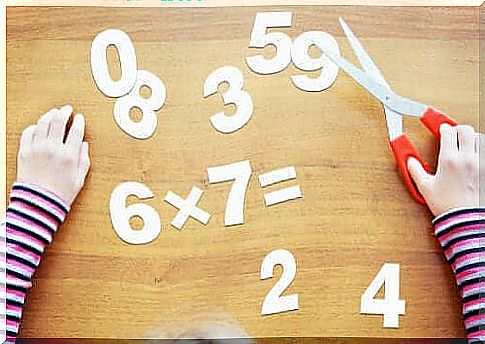What Is Dyscalculia And What Are Its Most Common Signs In A Child?

There is a fair amount of talk today about the special difficulty of reading, or dyslexia, but dyscalculia, or mathematical difficulty or the ability to calculate, is a lesser-known phenomenon. A child with dyscalculia has difficulty learning the basics of mathematics and acquiring mathematical ability, and he or she needs special support for learning. It is important for both parents and teachers to be aware of this mathematical learning disorder so that it can be detected in a timely manner.
Acquisition of mathematical ability
Mathematical ability develops gradually. During the school trip, the child learns, among other things:
- Numbers
- Arranging numbers
- Calculations
- Mathematical problem solving
- Performing logical exercises
There are many cognitive processes involved in learning mathematics. In order for mathematical ability to develop, certain thought processes must be advanced. These include:
- Protonumeric information
- Information on numbers and calculations
- Operations that require logic
- Information on the numerical system
- Arithmetic operations
- Mathematical problem solving ability

According to Gelman and Gallistel, the development of understanding numbers and calculations requires assimilation of five principles:
- Forming an association between words and objects and counting.
- Saying words in the correct order (one, two, three, etc.).
- The number 3 is related to cardinality, i.e. the understanding that the last number spoken represents the total number of numbers spoken above.
- The principle of abstraction means that anything can be calculated.
- The insignificance of the order. This means that it is possible to compute any sequence without changing the result.
Signs of dyscalculia in a child
Dyscalculia is a specific type of learning disorder. It affects a person’s ability to absorb mathematical knowledge or learn calculations. This learning disability does not mean a reduced level of intelligence, nor is it the result of weak learning strategies or theoretical deficiencies. The fact that a child regularly makes mistakes when processing numerical information can be one sign of a disorder in his ability to calculate.
A child with a calculation disorder may experience the following disorders:
- The child often relies on finger counting, even in simple calculations.
- Difficulty understanding the meaning of numbers.
- Difficulty interpreting quantity
- Difficulty writing or reading numbers.
- Difficulty remembering multiplication tables.

If the child notices the above signs, it is important to take into account:
- The chronological age of the child
- Level of child development
So what should you do if your child is suspected of having dyscalculia? The first thing to do is to contact the child’s school and discuss the matter with the child’s teachers. School staff can also carry out a thorough assessment of the child’s situation. There are a variety of tests that experts can use to determine if a child has dyscalculia. These tests assess a child’s numeracy, math skills, and distance counting.
How to help a child with dyscalculia?
To help your child, you should make teaching playful and fun. Pressure and stress on the child should be prevented. Next, we present some ideas to help develop a child’s mathematical ability at home.
- Numbers include hands-on exercises and daily assignments.
- Teaching calculation by demonstration and using a model.
- Playing games that require arithmetic skills.
- Calculating practical calculations, ie adding mathematics to everyday life.









